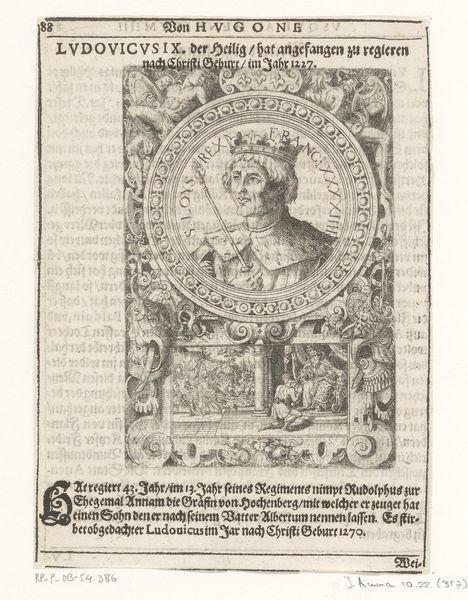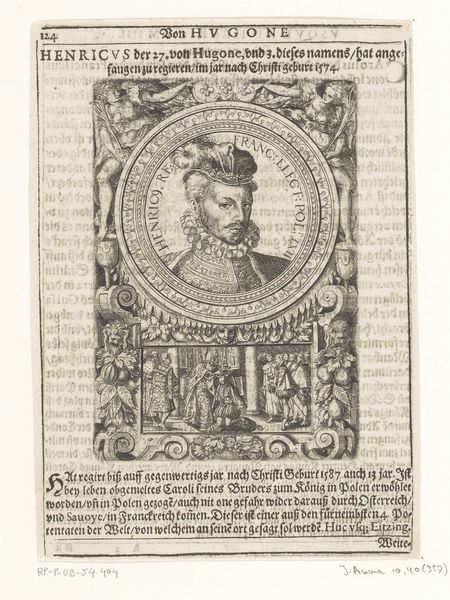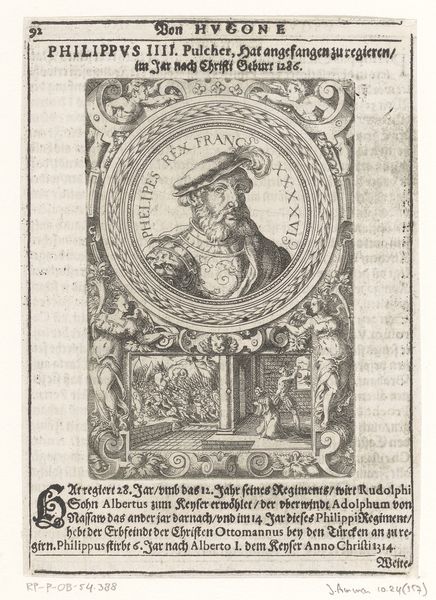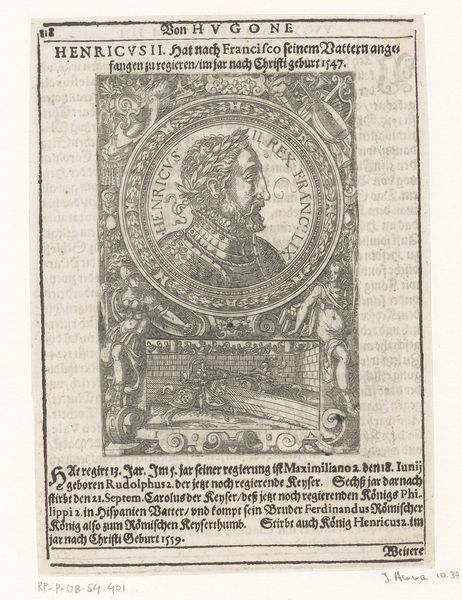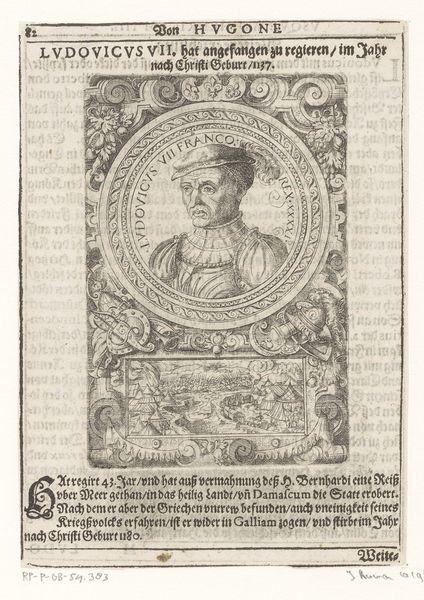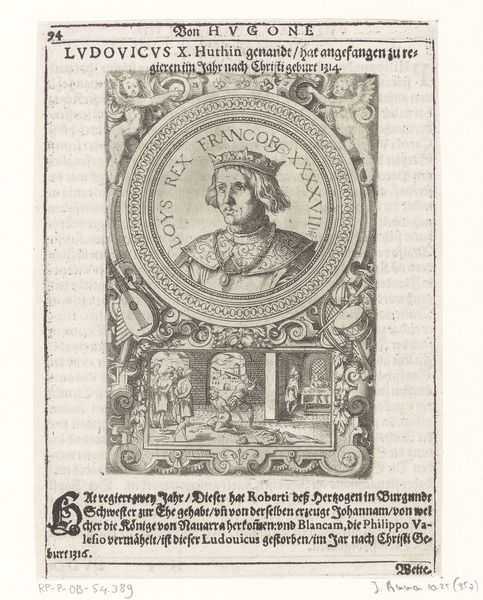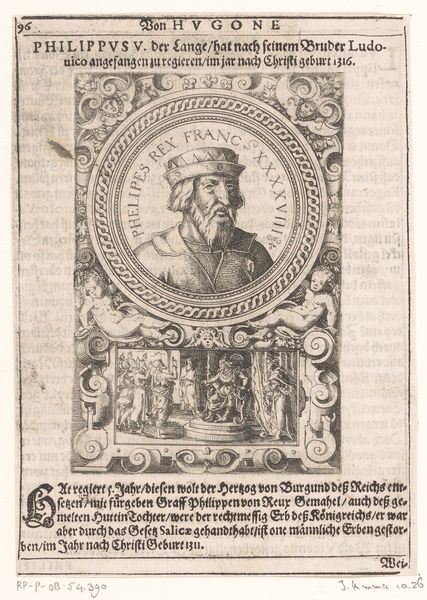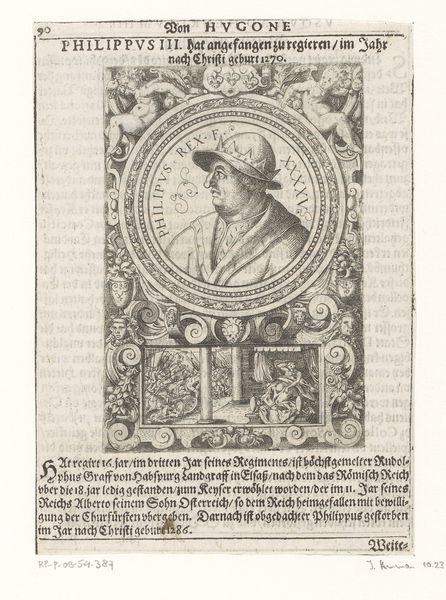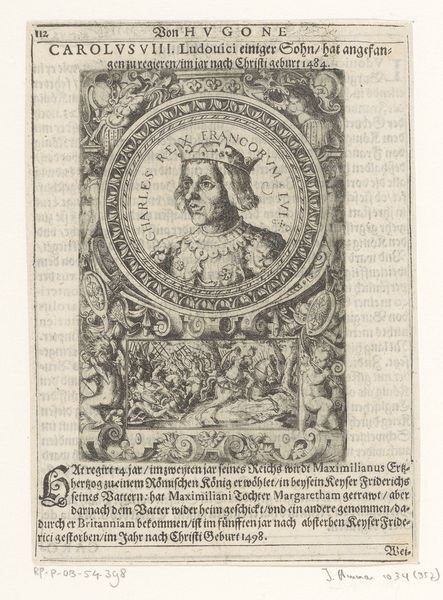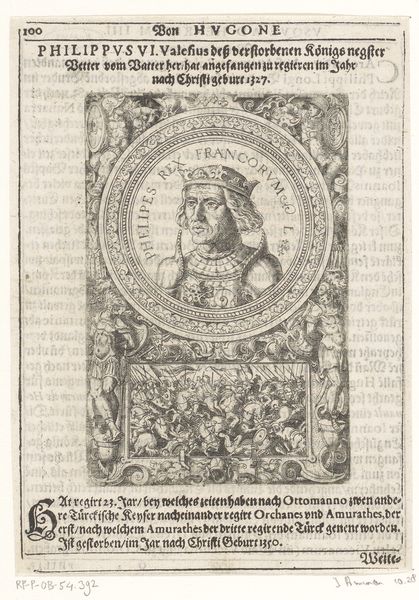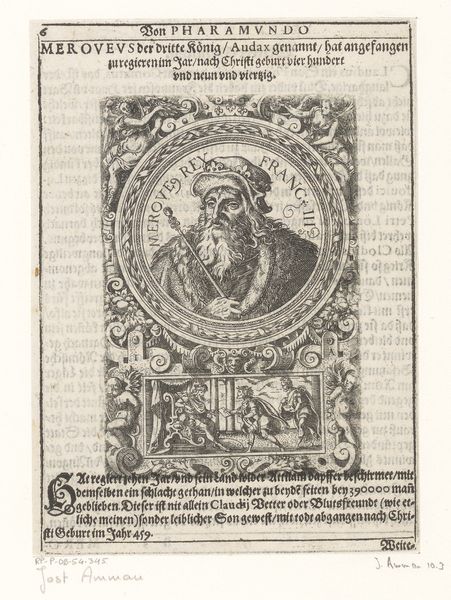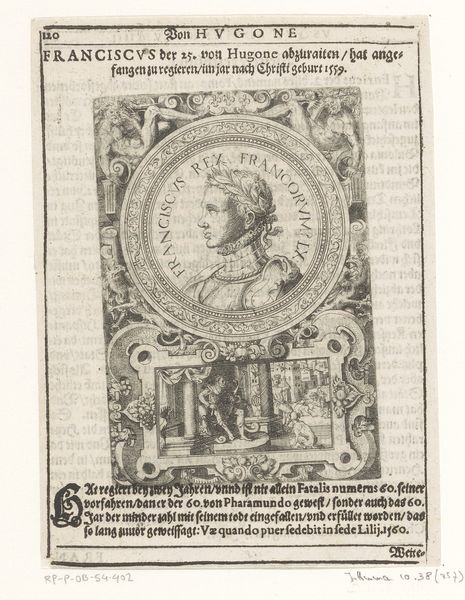
print, engraving
#
portrait
#
medieval
#
pen drawing
# print
#
pen illustration
#
form
#
line
#
history-painting
#
engraving
Dimensions: height 120 mm, width 80 mm
Copyright: Rijks Museum: Open Domain
Curator: I'm drawn to the intensity in this 1598 engraving by Jost Amman. "Portret van Karel V, koning van Frankrijk", housed here at the Rijksmuseum, presents Charles V, King of France, within a framework filled with imagery and text. It's a busy piece; what is your first take on it? Editor: Well, my initial reaction is to the formal austerity of the central figure sharply contrasts with the riot of symbolic visual detail. Charles V looks stoic, almost melancholy. Yet the composition is crammed with textual annotations and inset images of people laboring that tell an entirely different story of social complexity and royal ambition. Curator: Precisely. Amman situates Charles V within a complex web of historical narratives. The portrait itself echoes familiar regal iconography, but then you have the lower scene. Its exact content needs to be decoded further. I feel a strong need to contextualize all this visual symbolism. The use of text to define identity is fascinating to me here, the king as both figure and text. Editor: I see that symbolic dichotomy operating on a broader level. He's literally framed, as the king sits above overseeing some sort of royal endeavor with implications in social history, the construction of lineage. I would want to dive deeper into Charles' place within that narrative framework of leadership and the potential class dimensions Amman draws out here between figure and labor. Curator: Indeed. And don't forget this was made well after his reign. Amman constructs an image infused with cultural memory. Consider the conscious act of crafting that symbolic resonance decades after Charles V’s death in 1380. It suggests an evolving view of kingship, leadership, legacy. What meaning do these symbols generate for his contemporaries or future viewers? It is fascinating to explore, through art and writing. Editor: Ultimately, the image speaks volumes about how a ruler wishes to be seen versus the reality of the historical and societal impact they have had. How that symbolic construction endures over centuries says as much about how Charles saw himself as it tells about how artists can construct and dismantle social memory in an accessible artistic format like print. Curator: Right. This artwork gives pause to think of both what rulers have accomplished, what they desired for accomplishments, and how this memory will live in our history in print and on display. Editor: I find myself keen to explore further the visual elements in Amman's depiction, how he crafts and weaves narratives and emotional undertones via form, with Charles positioned not simply as king, but a king of symbol and cultural presence.
Comments
No comments
Be the first to comment and join the conversation on the ultimate creative platform.
